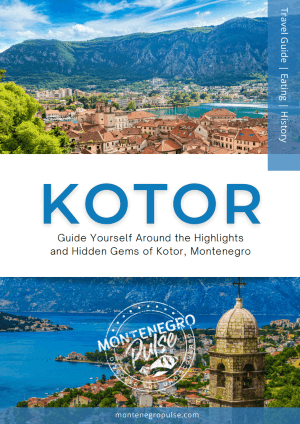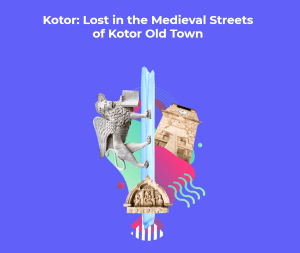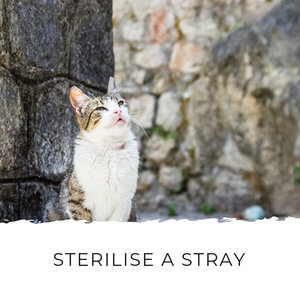Montenegro Pulse contains affiliate links and is a member of the Amazon Services LLC Associates Program. If you make a purchase using one of these links, I may receive compensation at no extra cost to you. See my disclaimer for more information.
Brandy in Montenegro: All About Rakija, the Balkans’ Favorite Drink
“A psychotherapist can help you, but rakija is cheaper.” - Balkan proverb
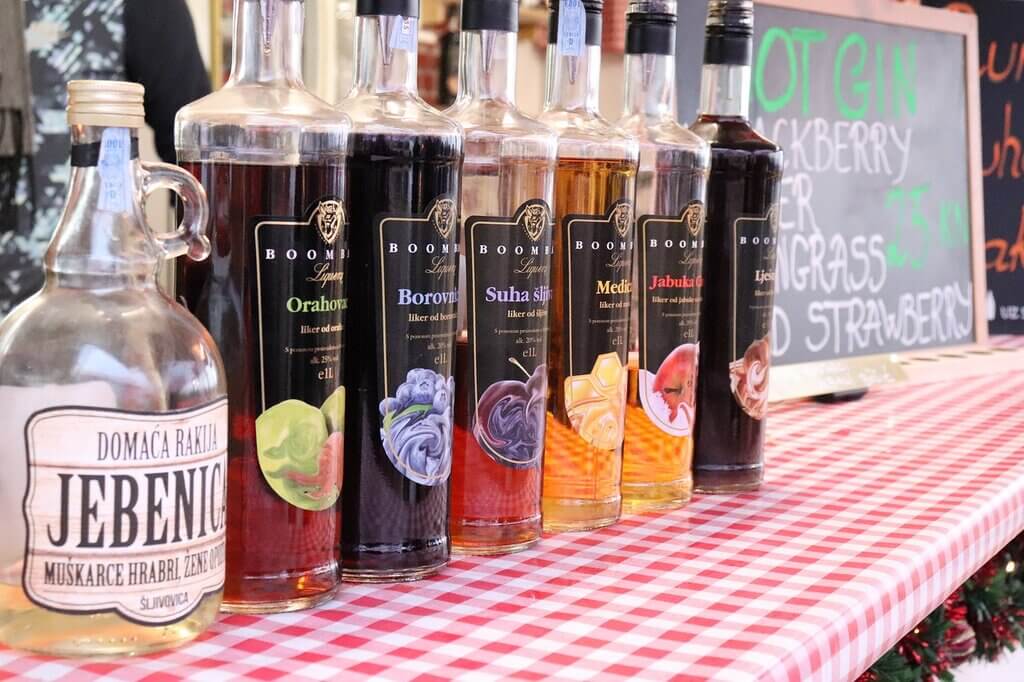 Image: Goran Horvat via Pixabay
Image: Goran Horvat via PixabayWelcome to the wild world of rakija, the notorious Balkan elixir that can make even the bravest souls feel like they've been slapped with a shot of liquid fire!
With its potent punch and legendary reputation for inducing spontaneous bouts of singing, dancing, and questionable decision-making, rakija is not your ordinary spirit. It's the stuff of folklore, the nectar of the gods, and the secret weapon of every Balkan grandma's medicine cabinet.
So grab your glass and brace yourself for a journey into the intoxicating realm of rakija, where the rules of sobriety are thrown out the window, and rakija is always on the menu.
Table of Contents
Introduction to Brandy in Montenegro
Where to Try Brandy in Montenegro
Wineries
Montenegro Full-Day Tour
Restaurants
Where to Buy Brandy in Montenegro
How to Drink Brandy in Montenegro
How to Serve Brandy in Montenegro
Health Benefits of Brandy in Montenegro
How to Make Rakija
1. Preparation
2. Fermentation
3. Brewing
4. Ageing
Flavours of Brandy in Montenegro
How to Store Brandy from Montenegro
Brandy from Montenegro as a Gift
Rakija as a Collectible
Brandy Around the Balkans
Albanian Raki
Bulgarian Rakia
Croatian Rakija
Macedonian Rakija
Romanian Rachiu
Serbian Rakija
Frequently Asked Questions About Rakija
Final Thoughts on Brandy in Montenegro
Introduction to Brandy in Montenegro
Rakija is not just a drink, it's a way of life in this part of the world. Brandy is a symbol of hospitality and celebration in the Balkans. Whenever people laugh, cry, rejoice, mourn or eat, brandy is there to grease the wheels.
Want to make new friends in Montenegro? Just whip out a bottle of rakija, and watch the magic happen! But beware, with rakija, sobriety might just be a distant memory. The taste is distinctive, the alcohol content is high (up to 90% ABV!), and the stories that come with it are legendary. One glass and you might find yourself singing traditional Montenegrin folk songs with strangers or proposing a toast to your long-lost cousin you never knew existed.
Here are some of the places you’ll always find brandy in Montenegro:
- Weddings: At weddings in the Balkans guests toast the newlyweds with a shot of rakija - Živjeli!
- Funerals: In Montenegro, shots of rakija are served after a funeral. As mourners file out they usually take a shot of rakija and a spoon of cooked barley. They drink “for the soul” of the deceased and often spill the first few drops on the ground “for the peaceful rest of the soul” before drinking the rest.
- Welcoming guests: If you find yourself invited to a home in Montenegro, you’ll typically be offered (okay, usually just presented with) a shot of rakija, especially if you’re a man. Women are usually offered something softer, perhaps a shot of sweet cherry or coffee liquor.
If you’ve booked family-run accommodation in Montenegro, might even be welcomed with a shot of rakija. This is a sign of honour and hospitality and declining, even if you have just finished a long trip, will cause offense. Think of it the best way to relax after a long journey!
It's no wonder rakija is considered a timeless classic that embodies the spirit of the Balkans. It's a drink that brings people together, ignites laughter, and creates memories that last a lifetime.
Where to Try Brandy in Montenegro
Wineries
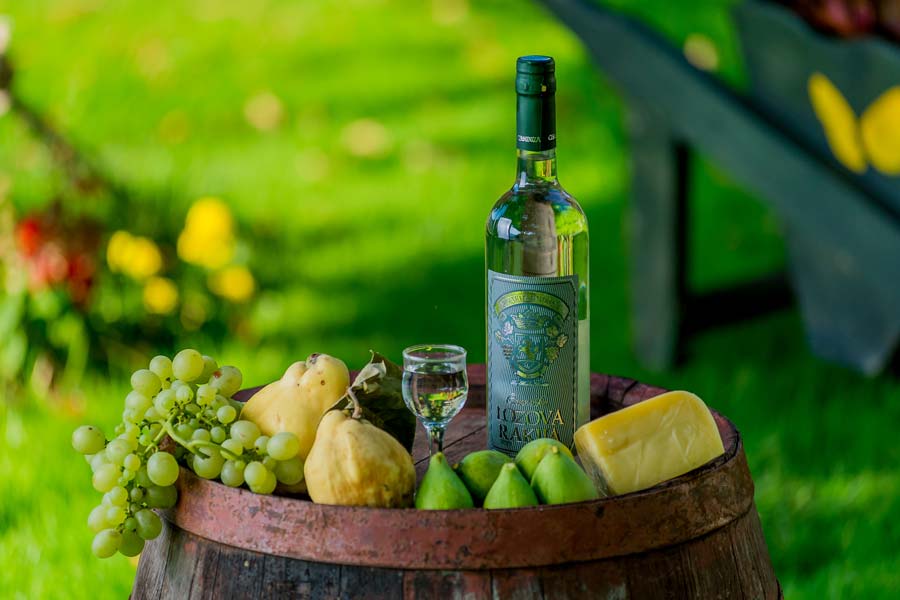 Montenegro lozova rakija brandy by Cermeniza Winery
Montenegro lozova rakija brandy by Cermeniza WineryThe best place to try brandy in Montenegro is directly at the wineries that make it. Rakija is made from grapes, so virtually all wineries make both wine and brandy.
When you book a wine tasting at a winery in Montenegro, you’ll also be offered their brandy. Montenegro lozova rakija (grape brandy) is the most common type, but they often have different varieties made from different fruits.
Montenegro Full-Day Tour
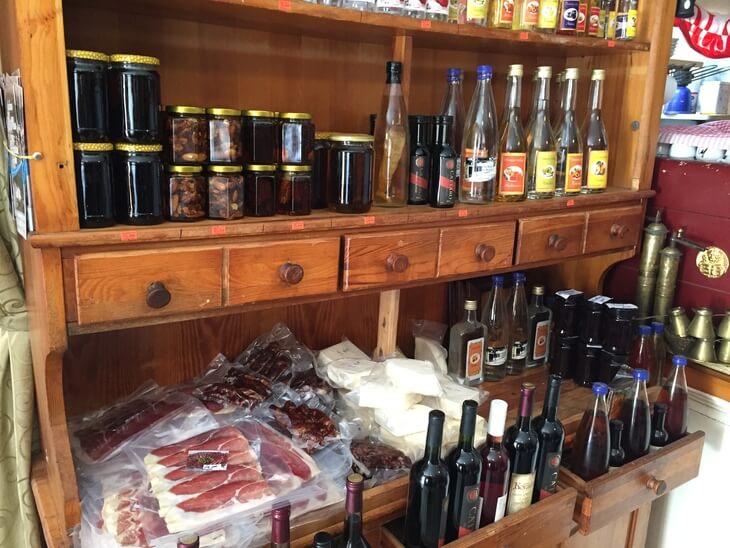 Brandy and other traditional Montenegrin produce for sale in Njeguši
Brandy and other traditional Montenegrin produce for sale in NjegušiThe Montenegro Full-Day Tour is one of the best ways to experience Montenegrin scenery and culture. And that includes Montenegrin brandy. One of the first stops on the tour is in Njeguši, a little village that’s known for producing Montenegro’s best prosciutto and cheese.
The tour visits a traditional smokehouse where they make prosciutto and the visit starts with a welcome shot of rakija. After that you get to try their prosciutto and cheese, washed down with a glass of their red wine. After that, people usually nap until the next stop!
This tour is a brilliant introduction to Montenegro, especially if you haven’t got much time. Click here to read my review.
Restaurants
You can also try Montenegrin brandy in any restaurant. Just look for loza or rakija on the menu, or ask your waiter for a recommendation. There will probably be several different types made from different fruit available, and your waiter can help you choose which to try.
Where to Buy Brandy in Montenegro
The best brandy in Montenegro is arguably domača rakija (homemade brandy). I recommend making a stop at any farmers market or roadside stall to buy a bottle of this exceptional firewater.
How will you recognise it?
It’s always sold in Coca-Cola bottles with Fanta lids by 80-year-old women!
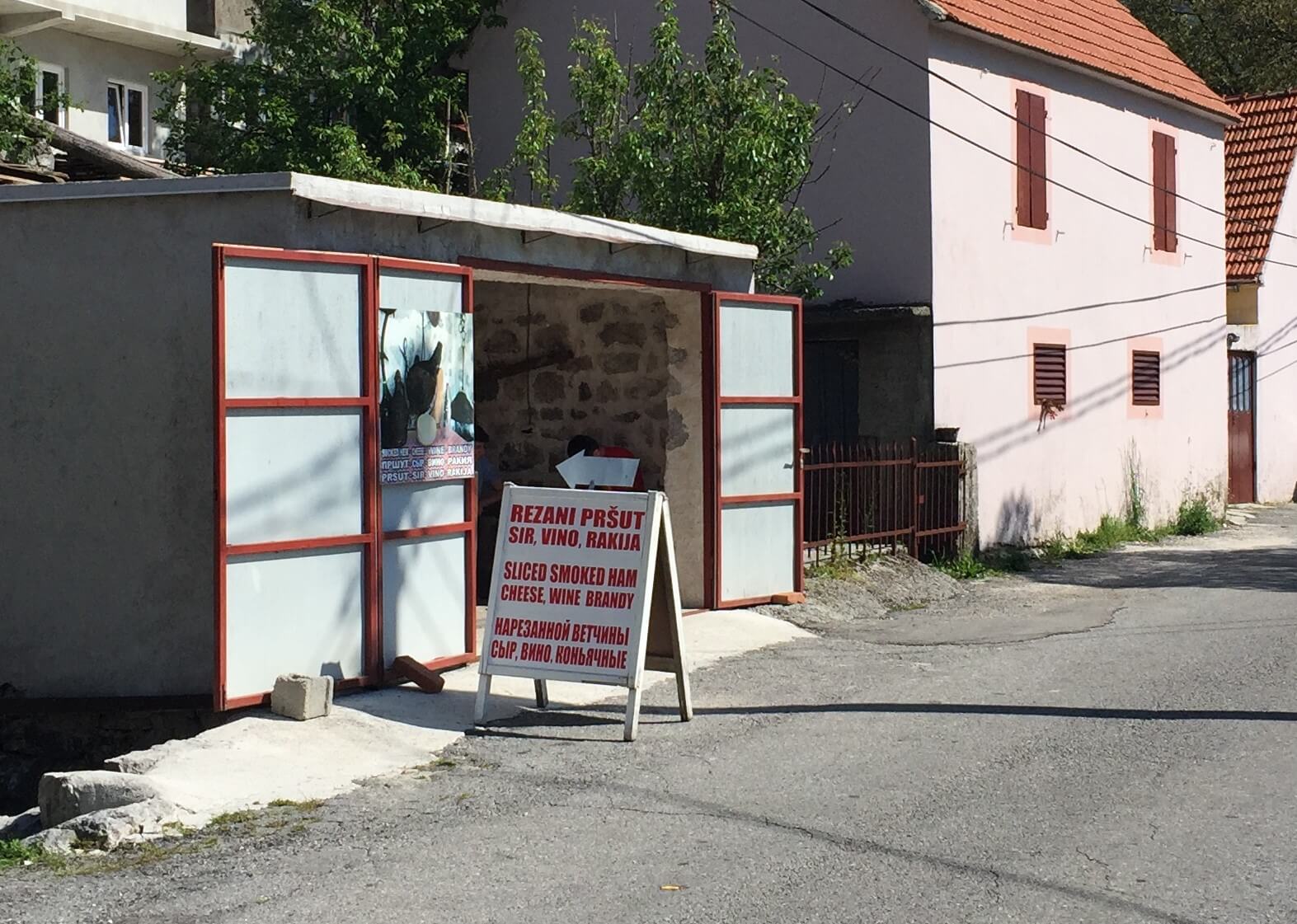
If you can’t get to a market to get your rakija, don’t worry. You can also buy it in supermarkets and convenience stores.
Plantaže 13 Jul is Montenegro’s largest wine and rakija producer. Their vineyard, Ćemovsko Polje, is the largest unbroken vineyard in Europe with over 3 million vines. You can buy a 750ml bottle of Plantaže’s Kruna lozova rakija (grape brandy) in any supermarket for around €15.
How to Drink Brandy in Montenegro
Neat
The most common way to drink rakija is from a small shot glass. Although it’s served in a shot glass, don’t make the mistake most foreigners make and drink it all at once like a shot! The proper etiquette with brandy in Montenegro is to sip it and show your appreciation. Even if every sip burns your throat like the fire of a thousand suns, smile and agree that it’s the best rakija you’ve ever had.
Sipping it also has the added benefit of helping you stay conscious. If you’re drinking homemade rakija, it could have as much as 90% alcohol content and doing shots of it could quickly put you ‘pod stolom’ - under the table! - not helped by the fact that your host will top up your glass continuously!
How to politely decline?
I have yet to find out.
Declining food and brandy in Montenegro is considered very impolite and will invariably offend your host. One way you can try to decline by claiming to be taking antibiotics, this is one of the very few socially-acceptable excuses for not drinking alcohol in the Balkans. Claiming that you don’t drink alcohol will be met with the same incredulous looks as if you claim you don’t eat meat, so your best bet is to go with antibiotics.
Warm
Want to know the best way to get started on a cold winter’s day in Montenegro?
With a shot of warm brandy!
Kuvana rakija, made with equal parts of rakija and water sweetened with caramelised sugar is the best way to get started on a cold winter’s day!
How to Serve Brandy in Montenegro
Rakija is always served with a glass of water. It’s also often served with food when people come to visit. Here are some ways rakija is served in Montenegro:
- With meze: Rakija is often served with meze, a platter of cured meats like prosciutto and salami, cheese, olives and pickles.
- With dried fruits and nuts: Dried fruits and nuts, such as raisins, apricots, and almonds, can be a perfect accompaniment to rakija because the natural sweetness and nuttiness of these snacks can complement the rich and caramel-like flavours of the brandy.
Health Benefits of Brandy in Montenegro
In Montenegro, brandy is a kind of wonder drug. I’ll never forget going to my neighbour’s house to see her 5 year old daughter Maja laid out on their couch with a cloth wound around her neck. When I asked what it was for, my neighbour said she had a sore throat and that applying a brandy-soaked cloth with black pepper sprinkled on it would cure it.
Maja was happily playing with my son again the next day, so who knows, there could be something to this rakija and pepper cure!
Rakija is the number one cure for almost any kind of ill and this is a list of common ways to use it:
- Wound disinfection - this is how most children’s cuts and scrapes are treated and why Montenegrins are generally immune to pain
- Mixed with honey and garlic to make a cough syrup
- Soaked into socks and put on the soles of the feet to reduce fever
- Soaked into a cloth and applied to the jaw for toothache
- Soaked into a cloth and applied to the neck for a stiff neck caused by exposure to the most deadly thing in the Balkans - promaja - a draft.
- For weight loss. Interestingly, rakija has no sugar and is very low in calories (just 92 calories per 40 ml)
- Rubbed into aching muscles
- A morning shot to boost the immune system
- To reduce cholesterol
- To improve digestion
- To cure the common cold
- To improve circulation
- For stress relief - it’s hard to be stressed when you’re drunk!
- To prolong life in general
How to Make Rakija
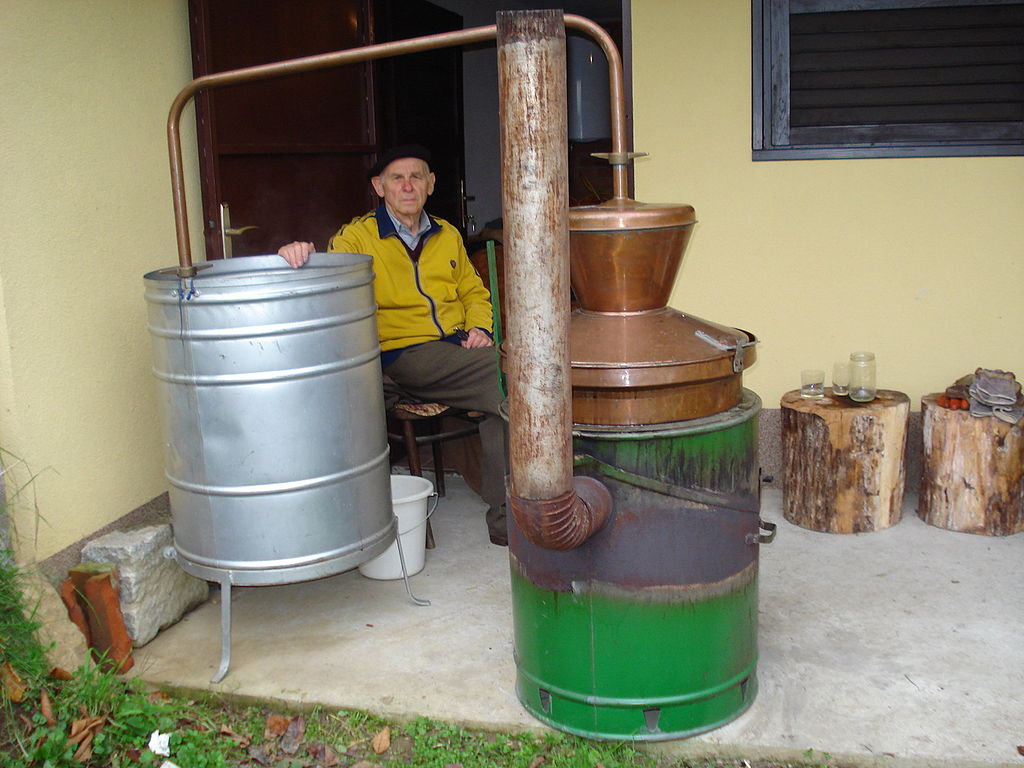 Silverije, CC BY-SA 3.0
Silverije, CC BY-SA 3.0 Made in Montenegro since the 15th century, Montenegrins take their rakija very seriously. The rakija-making tradition is strong throughout Montenegro and many households make their own wine and rakija, although this is under threat from EU regulation. It’s also becoming a lost skill as people move into apartments and don’t have the space to do it anymore.
September is wine and brandy-making month in Montenegro and you’ll find rakija-making paraphernalia in garden centres throughout Montenegro. The production of brandy in Montenegro is a labor of love that requires skill, patience, and attention to detail. My father in law used to spend all of September carefully tending his drums as he made wine and rakija. Years after his passing, I still have dozens of liters of his rakija aging in our garage.
Here are the steps for making rakija:
1. Preparation
It starts with the careful selection of the finest grapes, which are harvested at their peak of ripeness to ensure maximum flavor. Once the grapes are harvested, you put them into drums. Measuring the sugar level with a saccharometer is essential, and the sugar level must be between 20 and 22%. High quality grapes shouldn’t need any sugar added.
You can also make rakija from the leftovers of the grapes that you used to make wine. This is called komovica, while rakija made from whole grapes is called loza.
2. Fermentation
Stir the grapes in the drums 2-3 times a day for the first five days and then leave them for 20 - 40 days to ferment. The length of time depends on the weather and type of fruit being used.
When the sugar content gets to 0, transfer the liquid into a tank for brewing.
3.Brewing
Boil the liquid in one tank and it passes through a pipe into a second tank, where it cools. Repeat the process.
Now you have the holy grail - rakija!
In Montenegro, brandy can be anywhere from 35% to 90% alcohol, but usually sits around 80%. That’s why I recommend sipping it, not shooting it down like a shot of tequila!
4. Ageing
The final stage of production of brandy in Montenegro is ageing. Rakija is aged in either large glass bottles or oak barrels. The bottles or barrels are left open for 2 -3 weeks to allow the poor-quality alcohol to evaporate.
Rakija can be drunk straight away, but like whiskey, this brandy improves with age, especially when aged in wooden barrels.
Flavours of Brandy in Montenegro
Grapes are the most common fruit used to make brandy, but Montenegrins make rakija from just about any fruit. Plums, quince, pears – you name it, they've probably turned it into rakija. Doctor turned winemaker Goran Radević, of Radević Estate in Podgorica, has even figured out how to make it from pomegranates!
Brandy in Montenegro can be made from any of these fruits:
- Apricot
- Quince
- Apple
- Pear
- Plum
- Mulberrry
- Lemon
After distillation, people sometime add other ingredients to rakija to give it a more complex taste and aroma. You’ll often find rakija flavoured with:
- Honey
- Walnuts
- Anise
- Herbs
- Myrtle
- Carob
How to Store Brandy From Montenegro
If you've recently acquired a bottle of brandy from Montenegro and you want to make sure it maintains its quality and flavour for years to come, proper storage is crucial. Brandy is a distilled spirit that can last for a long time if stored correctly, and here are some tips on how to do so:
- Store in a cool, dark place: Brandy should be stored in a cool and dark environment to prevent exposure to light and heat, which can cause the flavor to degrade over time. Ideally, a temperature between 15-20°C (59-68°F) is recommended for storing brandy. Avoid placing the bottle in direct sunlight or near a heat source like a radiator.
- Once you've opened the bottle of brandy, keep the lid on to prevent air from getting into the bottle and oxidising the brandy, which can change the flavour and aroma. Make sure the bottle is well-sealed to keep the brandy fresh.
- Avoid temperature fluctuations: Brandy is sensitive to temperature fluctuations, so it's important to store it in a place where the temperature remains relatively stable. Avoid storing brandy in areas where the temperature fluctuates drastically, such as near a door or window, as this can cause the liquid to expand and contract, potentially damaging the flavor and aroma.
- Keep it away from strong odors: Brandy has a delicate flavour profile that can easily absorb odours from its surroundings. Avoid storing brandy near strong-smelling items like spices, onions, or cleaning products, as these odours can affect the aroma of the brandy over time.
- Lay the bottle horizontally: If you're storing an unopened bottle of Brandy, it's best to lay it horizontally to keep the cork moist and prevent it from drying out. A dry cork can shrink and allow air to enter the bottle, which can affect the quality of the brandy. If you're storing a bottle with a screw cap or synthetic cork, this step may not be necessary.
- Don't store for too long: While brandy can last for a long time, it's best to drink it within a reasonable time frame, as the flavors can change over time. Generally, brandy can be stored for several years, but it's recommended to drink it within 1-2 years after opening for optimal flavour.
Brandy in Montenegro as a Gift
People love giving rakija as a gift because it's usually homemade and made with love by families or individuals who take pride in their distilling skills. So, it's not just a drink, it's a labour of love. When you gift rakija, it's like saying "I appreciate you and I'm sharing something special with you."
You'll see rakija being gifted at celebrations like weddings, baptisms, and holidays. Hosts offer it to their guests to show hospitality, and guests often bring rakija as a gift to say thanks. It's also a popular gift for birthdays, anniversaries, and promotions because it's meaningful and shows you care.
People also believe rakija has medicinal properties, so it's common to gift it to wish good health. Plus, rakija isn't just for personal relationships, it's also exchanged in business settings to show friendship and trust. It's a way to establish and maintain positive relationships and express gratitude for business opportunities.
Rakija as a Collectible
Rakija is not typically known as a collectible. However, there is at least one collectible brandy by Balkan winemakers on the market.
New Zealand wines are known around the world and New Zealand’s winemaking industry got its start when immigrants from Dalmatia in Croatia brought vines to New Zealand and started making wine.
In the 1960’s a group of Dalmatian winemakers in New Zealand looked into making rakija in as well as wine. Josip Babić, Petar Fredatović, Nikola Delegat, Nikola Nibilo, Mate Selak, Stanley Chan (the only one not from Croatia, but who was an honourary member of the so-called ‘Dali-mafia’) and Josip Balić founded 7Cellars and started making brandy in New Zealand.
Although the brandy was deemed world class, it wasn’t deemed commercially viable to distill brandy in New Zealand and the men from 7Cellars put their batch into French Limousin oak barrels, where it stayed for the next 40 years.
In 2002, Nick Nobilo, Nikola Nobilo’s son, bottled the batch and was left with 502 bottles of one-off aged brandy.
“This brandy is unique, it’s arguably some of the rarest brandy in the world and it’s been judged in the top 5% of brandy internationally in terms of flavour and complexity…”
7Cellars brandy is currently on sale at a price of US$5,685 a bottle.
Brandy Around the Balkans
Albanian Raki
In Albania, raki is usually made from grapes or plums and is a traditional drink. Like other Balkan countries, raki is usually made at home and is a part of the culture.
Bulgarian Rakia
Bulgaria is considered the birthplace of rakija. Archaeologists have found piece of pottery from the 14th century with the word ‘rakinja’ on it, but believe it’s been made here since at least the 11th century.
Croatian Rakija
Rakija is the most popular alcoholic drink in drink in Croatia and there are several varieties made here:
- Travarica - made with herbs is often served with a cake made with figs and nuts.
- Orahovača is made by adding walnuts and left in the sun over summer. This one is believed to help people suffering from bronchitis.
- Mrtina is infused with myrtle
- Aniseta with anise
- Medica with honey
- Biska with mistletoe
- Šlivovica made from plums
- Viljamovka made from Williams pears
Macedonian Rakija
The most popular rakija in Macedonia is made with grapes, but the Berovo and Kichevo regions also make plum brandy. Macedonians also like to flavour their brandies. Anasonka is brandy flavoured with anise and mastika is rakija flavoured with anise, herbs and honey.
Romanian Rachiu
Romanian rachiu is usually made from grapes, but they also love țuică, brandy made from plums.
Serbian Rakija
Serbian rakija is most commonly made from plums (Šlivovica). Serbia has even trademarked five types of rakija: Šlivovica (plum), Dunjevača (quince), Jabukovača (apple), Kruškovača (pear) and Medovača (honey).
Frequently Asked Questions About Rakija
What is rakija?
What is rakija?
Rakija is a type of brandy that’s popular throughout the Balkans. It’s a traditional drink that’s used in all significant social situations.
Is rakija stronger than vodka?
Is rakija stronger than vodka?
Rakija can be stronger than vodka, but it depends on who makes it. Store-bought rakija is around 50% ABV (alcohol by volume), while vodka is around 40% ABV. However, often these drinks are much stronger when homebrewed.
What is the alcohol percentage of rakija?
What is the alcohol percentage of rakija?
The alcohol percentage of rakija is usually 40-65%. Homebrewed rakija can be anywhere from 50-90% alcohol.
Final Thoughts: Brandy in Montenegro
Next time you're in Montenegro, don't miss the chance to experience rakija for yourself. Rakija is not just any ordinary drink, it's a taste of the warm hospitality and culture of the Balkans and Eastern Europe.
With it’s long tradition, passion in production and versatility, it’s easy to appreciate why rakija is so popular throughout the Balkans.
So, next time you come across a bottle of rakija, take a sip and appreciate the rich heritage and skills that go into making it.
Živjeli!
Related Articles
- Must-Try Montenegro Food on Your Trip to Montenegro
- Best Restaurants in Montenegro
- Best Restaurants in the Bay of Kotor
- 10 Montenegrin Commandments: Hilarious Guide to the Good Life
- Top 100 Montenegrin Names and Their Meanings + Name Generator
- Home
- Travel to Montenegro
- Brandy in Montenegro




